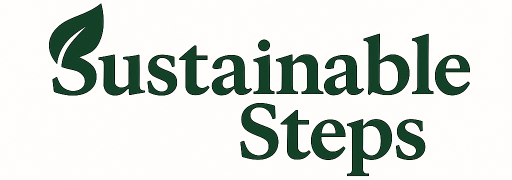Introduction
Whether you’re leading a team, making a financial investment, or navigating a personal crossroad, high-stakes decisions carry pressure, risk, and long-term consequences. These are the moments that define outcomes—but they’re also when our judgment is most likely to be clouded by stress, emotion, or overthinking. So how do you cut through the noise and make confident, well-reasoned decisions when it matters most? In this guide, we’ll explore powerful, science-backed strategies for making better decisions under pressure. From mental models to mindfulness, you’ll learn practical tools to improve clarity, reduce regret, and take decisive action in life’s most critical moments.

Why High-Stakes Decisions Are So Challenging
High-stakes decisions are those where the outcome significantly impacts your life, business, finances, or relationships. They often involve:
- Uncertainty and incomplete information
- Emotional weight or personal consequences
- Time pressure
- Complex trade-offs
These factors activate stress responses in the brain that can impair reasoning, increase impulsivity, or lead to decision paralysis. Understanding this challenge is the first step toward overcoming it.
8 Strategies to Improve Decision-Making in High-Stakes Situations
1. Use the 10/10/10 Rule
Ask yourself:
- How will I feel about this decision in 10 minutes?
- In 10 months?
- In 10 years?
This framework, coined by author Suzy Welch, helps you gain long-term perspective and prevent short-term emotions from hijacking rational thinking.
2. Apply the OODA Loop
Originally developed for military strategy, the OODA Loop stands for:
- Observe: Gather relevant facts and context.
- Orient: Analyse the situation through your experience and biases.
- Decide: Choose a course of action.
- Act: Execute quickly and evaluate the result.

This loop helps you stay agile in dynamic, high-pressure environments and avoid over-analysis.
3. Separate Emotion from Information
Emotions are valid, but unchecked emotion can distort logic. Try:
- Naming your emotion (“I’m feeling anxious about this deal.”)
- Journaling to clear mental fog
- Taking a pause before responding or committing
This small emotional distance can create room for more balanced thinking.
4. Pre-Mortem Analysis
Before committing to a decision, imagine it has already failed. Then ask:
- What went wrong?
- What assumptions did I overlook?
- What steps could I take now to prevent that failure?
This strategy, popularised by psychologist Gary Klein, helps identify blind spots and avoid preventable errors.
5. Set a Time Limit
Time pressure can impair judgment, but too much time can also lead to indecision. For complex decisions, set a realistic deadline:
- Use 24–48 hours for personal decisions
- Set time-boxed discussions for team input
- Use timers during brainstorming to keep momentum
A structured timeline encourages action without sacrificing thoughtfulness.
6. Use the 80/20 Rule (Pareto Principle)
Often, 80% of outcomes come from 20% of inputs. Focus on:
- The most critical variables affecting the outcome
- The highest-leverage options that give the greatest return
- Ignoring non-essential data or analysis
This helps you avoid “analysis paralysis” by prioritising what matters most.
7. Consult an Outside Perspective
A trusted advisor, mentor, or unbiased third party can provide:
- Emotional distance from your situation
- Alternative interpretations of facts
- Questions you might not have considered
Even a short conversation can reveal hidden opportunities or risks.
8. Visualise Outcomes with Decision Trees
A decision tree maps out each possible action and its likely consequences. It’s especially useful when:
- There are multiple paths or uncertain variables
- You need to weigh short-term vs long-term trade-offs
- Quantifying potential risk or return matters

Using visual models can reduce cognitive load and clarify complex decisions
Common Pitfalls to Avoid
Overconfidence Bias
Believing you know more than you do can lead to risky choices. Balance confidence with humility and data.
Decision Fatigue
Too many decisions in a day reduce willpower. Schedule high-stakes choices in the morning or when energy is high.
Perfectionism
Waiting for the “perfect” decision often results in missed opportunities. Aim for good enough with clarity—and adjust later if needed.
The Role of Self-Awareness in Decision-Making
High-stakes decisions often reflect our values, fears, and goals. To make better choices:
- Reflect on your core values
- Ask what success looks like in this context
- Be honest about what you’re avoiding or protecting

Self-awareness isn’t just a soft skill—it’s a strategic advantage when the stakes are high.
Real-Life Example
Alex, a senior manager at a Sydney tech company, was offered a major promotion that required relocating interstate. Torn between career growth and family disruption, he used the 10/10/10 rule, discussed the trade-offs with a mentor, and mapped the pros and cons in a decision tree. Within 48 hours, he made a confident, values-aligned decision to stay local and request a hybrid leadership role—one that was eventually approved.
Conclusion
Making high-stakes decisions doesn’t have to feel overwhelming. By combining practical frameworks like the OODA Loop and 10/10/10 Rule with emotional awareness and structured thinking, you can make smarter, faster, and more confident choices. These strategies are not about guaranteeing a perfect outcome—they’re about giving you the clarity, courage, and tools to choose wisely when it matters most.
